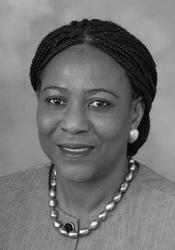As the fall semester comes to a close, students and faculty are preparing for the spring semester and the possibility of more in-person classes. Conducting a review of the successes, failures, and lessons learned from courses that were held in-person this fall can assist with planning strategies heading into a new semester.
Gabriella Nasto, a junior communication student, did see benefits of in-person instruction this fall. She said, “I think my in-person class benefited me more because I was able to focus better than I did in my on-line classes.” Nasto also felt that communication was easier with her professor when meet in person rather than through Zoom meetings like her other classes. Nasto believes that Zoom classes can make it difficult to find the right time to ask a question or make a comment.
Senior communication student Alyssa Abatemarco feels that online courses are just as effective as in-person courses. She said, “My online teachers have been great with interacting with us, and I really don’t see a difference.” However, she does think that some professors teaching online may be assigning ‘busy work,’ just because they aren’t meeting in person.
For some students, in-person classes bring back a sense of normalcy to college life. “The good thing about going to an in-person class was it made life still feel a little normal with everything going on, and my professor is more understanding because he knows the circumstances,” said Nasto.
Both Abatemarco and Nasto pointed out that being on campus after the quick exit in March has been a nice change. Even though the campus is pretty empty, it is nice to at least spend a little time there,” Abatemarco said.
Various departments have executed different methods of course delivery. For example, planning in-person classes for the spring semester is critical for the School of Science due to lab work.
Steven Bachrach, Ph.D., Dean of School of Science and Professor of Chemistry, said, “Certainly, our biggest efforts over the summer were towards delivery of our laboratory classes. We had to plan for the full gamut of possible delivery means because the decision of how the fall would proceed did not come until August, and even after that decision was made, we had to be prepared for campus closure due to the virus.”
Social distancing requirements have also prevented team breakout work in labs, eliminating one of the key elements for many science courses. Bachrach continued, “Wearing masks has meant a more subdued class we’re missing the feedback from seeing faces, voices are muffled, speaking just the physical movement is more difficult with a mask.”
While the School of Education has conducted in-person classes, the entire curriculum required adjustments, according to Ruth Morris Ed.D., Chair of the Department of Curriculum and Instruction and Lecturer of Early Childhood Education.
“This was necessary, since the traditional and online classrooms are two different things,” Morris said. She also noted that professors rely on communication tools like body language and gestures with in-person classes, but with online courses, she said they have to “Create the curriculum and delivery in a manner that directly emphasizes how the concepts are communicated.”
Morris said it is not a matter of what is better—in-person or online classes—explaining, “The art of teaching is understanding the instructional tools that are successful in the traditional classroom and the online classroom…One major lesson that I learned from teaching in-person this semester was underestimating that every member of the classroom would be careful and honest about COVID-19 adherence to safety protocols.”
Her motive to teach in-person classes was to contribute to the traditional classroom learning experience. However, she recalled, “There were several incidents that created an unsafe environment for me and my students… I was now responsible for everyone’s learning and health.” She noted that this places a higher demand on classroom objectives.
Safety remains a concern for both faculty and students, who must consider the potential of exposure by attending in person classes and spreading it to family members and/or roommates. Professors face higher exposure from meeting with several groups of students.
Bachrach said that he has not heard of any complaints or problems with the safety precautions that are used in labs. He did add, however, that some conference rooms and study rooms had to be closed because students were violating rules related to mask wearing and bringing food and drinks into the rooms.
With course delivery methods for the spring semester closely resembling those offered this fall, sharing information and updates remains an important component to maintaining a structured educational experience.
“The campus consistently communicated with everyone to provide clear guidelines as we navigated this semester,” Morris said.
PHOTO TAKEN by Melissa Badamo




